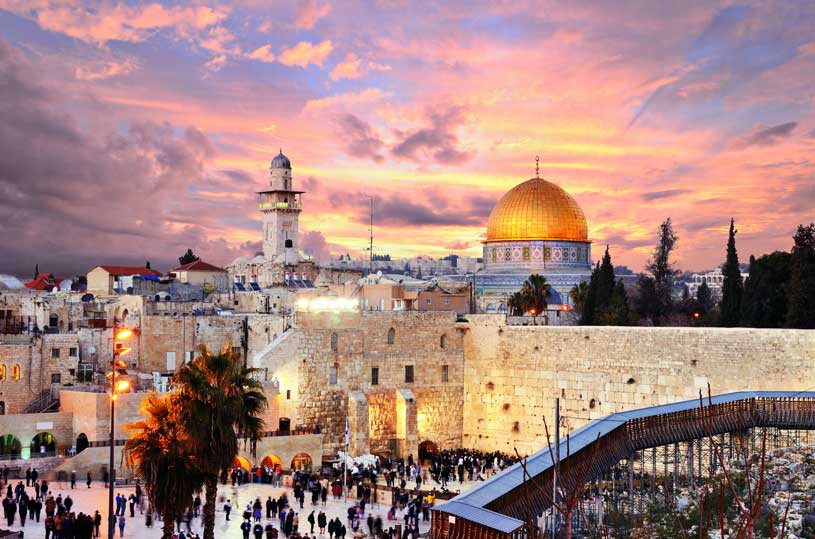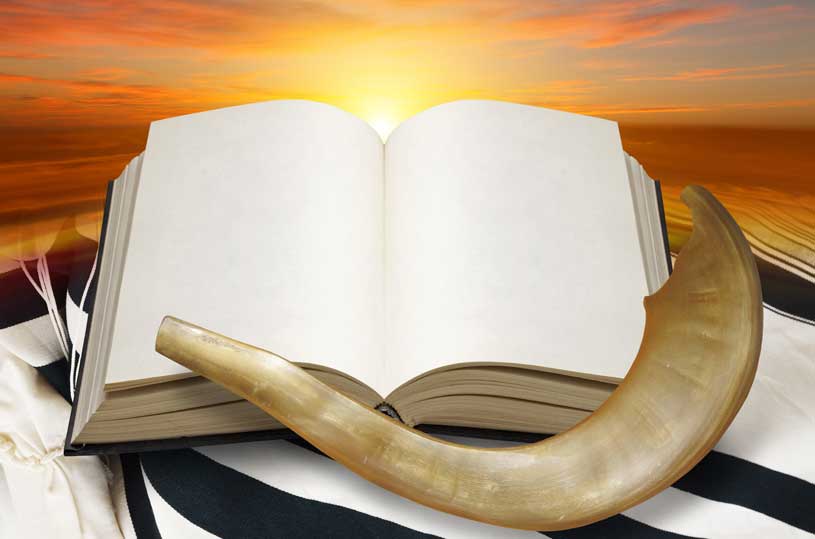1. It is a day of forgiveness for all generations. On the first day of Elul, Moses went up to Mt. Sinai the third time to receive the second Tablets, and a shofar was blown warning the people not to make the mistake of making another Golden Calf. Forty days later, on Yom Kippur, he came down with the Two Tablets in his hand, and told the Israelites the happy news that G-d was reconciled with them. The Almighty then ordained Yom Kippur as a day of forgiveness for all generations. Therefore, the entire period from the beginning of the month of Elul until Yom Kippur are days when G-d shows us His favor.
2. We blow the shofar. Every day of the month of Elul (not including Shabbat and the eve of Rosh Hashana), the shofar is blown at the end of prayers. It is blown to arouse people to repent and rectify their behavior and deeds, as it says: “Can a shofar be blown in a city and the people won’t shudder?” (Amos 3:6)
3. Selichot. Sephardim say the special penitential prayers called ‘Selichot’ throughout the month of Elul. Ashkenazic Jews say Selichot only the week before Rosh Hashona. Selichot are a collection of special supplications in which we ask the Creator of the universe for a good and blessed year.
4. Chapter 27: In the morning and afternoon prayers, we add Psalms 27. The chapter opens with the verse: “By David. G-d is my light and my salvation, so from whom should I be afraid? G-d is the stronghold of my life, from whom should I feel trepidation?”
5. Three chapters of Psalms: The Baal Shem Tov ordained that from the first of Elul onward one should say 3 psalms from the Book of Psalms according to their order until Yom Kippur. On Yom Kippur, we say the remaining 36 chapters and conclude the entire Book.
6. We check tefillin and mezuzot: The custom is to check tefilllin and mezuzot during this month.
7. We convey greetings for the New Year. When we send letters to each other, we include the greeting Kesiva V’chatima Tova (may you be written down and signed for a good year).
8. We make a reckoning of our life: One should spend time thinking over one’s life in the past year, and trying to fix whatever needs fixing in preparation for the new year.
9. One’s self introspection should be done with serenity, calmness and joy. The spiritual dean of Kol Torah yeshiva, Rabbi Yerucham Borodiansky, recommends getting worried and fearful only when one hears the shofar after the morning prayers, and when reciting the psalm “By David, G-d is my light and my salvation.” As for the rest of the day? We have to serve G-d calmly and serenely.
10. This month is especially auspicious to attain love of every Jew and love of G-d. Elul is an acronym of the verse “Ani l’dodi v’dodi li” — “I am for my beloved and my beloved is for me.” This verse is from the Song of Songs and it describes Israel’s and G-d’s love for each other through the parable of a husband’s love for his wife. This verse talks about the love that exists between the Jewish people, the “woman”, and her “husband”, the Creator of the universe.
Pirkei D’Rabbi Eliezer says that the month of Elul are days of favor in which G-d becomes especially close to us. Our “beloved” comes close to us and accepts our requests during these forty days.
The Seder Hayom authored by Rabbi Machir, a great rabbi who lived in the 16th century, says that “I am for my beloved” because “my beloved is for me.” The reason why we feel so close to G-d during these days is because He really is close to us irrespective of our efforts to be close to Him.



